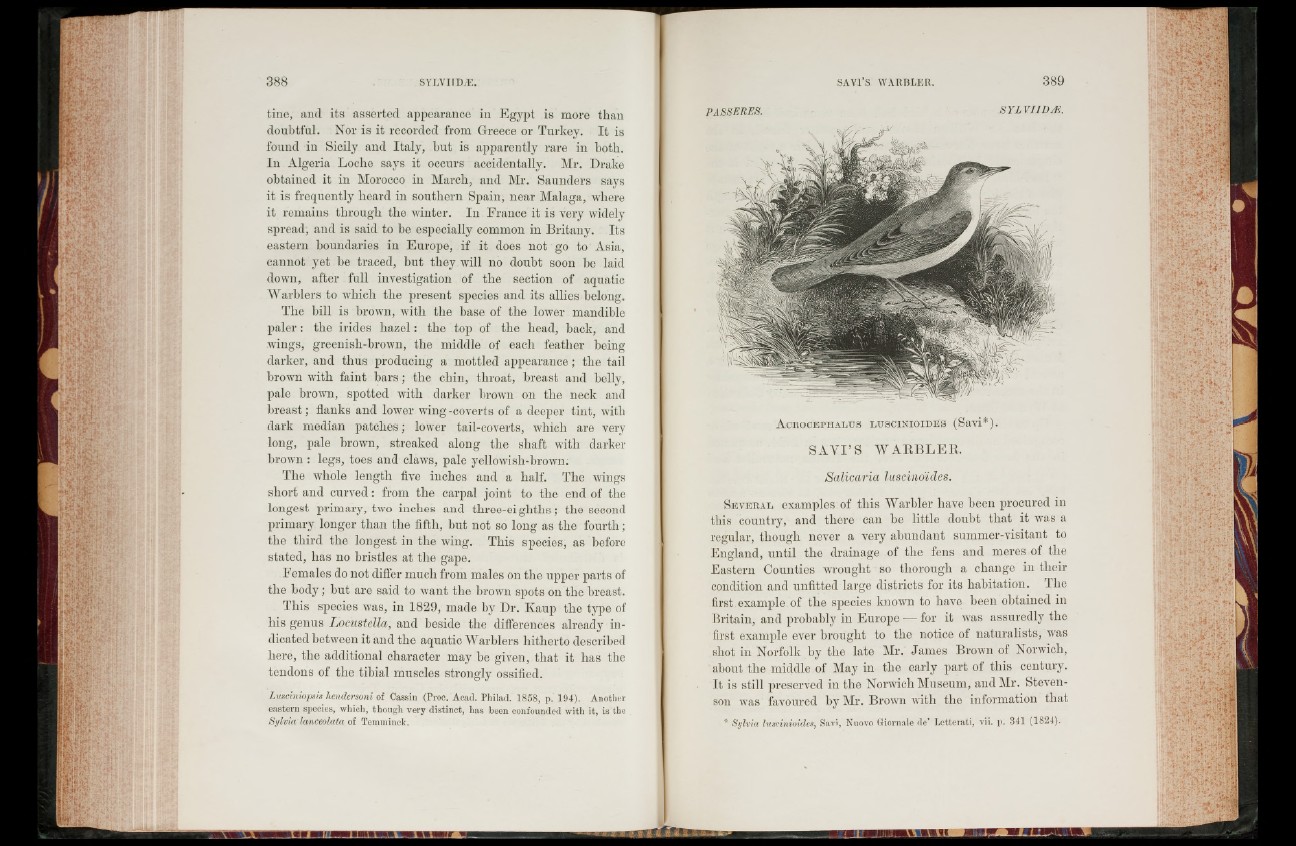
tine, and its asserted appearance in Egypt is more than
doubtful. Nor is it recorded from Greece or Turkey. It is
found in Sicily and Italy, but is apparently rare in botli.
In Algeria Loche says it occurs accidentally. Mr. Drake
obtained it in Morocco in March, and Mr. Saunders says
it is frequently beard in southern Spain, near Malaga, where
it remains through the winter. In France it is very widely
spread, and is said to he especially common in Britany. Its
eastern boundaries in Europe, if it does not go to Asia,
cannot yet be traced, hut they will no doubt soon he laid
down, after full investigation of the section of aquatic
Warblers to which the present species and its allies belong.
The bill is brown, with the base of the lower mandible
p a le r: the irides h azel: the top of the head, back, and
wings, greenish-brown, the middle of each feather being
darker, and thus producing a mottled appearance; the tail
brown with faint b a rs; the chin, throat, breast and belly,
pale brown, spotted with darker brown on the neck and
breast; flanks and lower wing-coverts of a deeper tint, with
dark median patches; lower tail-coverts, which are very
long, pale brown, streaked along the shaft with darker
brown : legs, toes and claws, pale yellowish-brown.
The whole length five inches and a half. The wings
short and curved: from the carpal joint to the end of the
longest primary, two inches and three-eighths; the second
primary longer than the fifth, but not so long as the fourth ;
the third the longest in the wing. This species, as before
stated, has no bristles at the gape.
Females do not differ much from males on the upper parts of
the body; but are said to want the brown spots on the breast.
This species was, in 1829, made by Dr. Kaup the type of
his genus Locustella, and beside the differences already indicated
between it and the aquatic Warblers hitherto described
here, the additional character may be given, that it has the
tendons of the tibial muscles strongly ossified.
Lusciniopsis hendersoni of Cassin (Proo. Acad. Philad. 1858, p. 194). Another
eastern species, which, though very distinct, has been confounded with it, is the
Sylvia lanceolata of Temminek.
A c r o c e ph a lu s l t j s c in io id e s (Savi*).
SAYI ’S WA B B L E E .
Sctlicaria luscinoides.
S e v e r a l examples of this Warbler have been procured in
this country, and there can he little doubt that it was a
regular, though never a very abundant summer-visitant to
England, until the drainage of the fens and meres of the
Eastern Counties wrought so thorough a change in their
condition and unfitted large districts for its habitation. The
first example of the species known to have been obtained in
Britain, and probably in Europe — for it was assuredly the
first example ever brought to the notice of naturalists, was
shot in Norfolk by the late Mr. James Brown of Norwich,
about the middle of May in the early part of this century.
It is still preserved in the Norwich Museum, and Mr. Stevenson
was favoured by Mr. Brown with the information that
* Sylvia luscinioides, Savi, Nuovo Giornale de' Letterati, vii. p. 341 (1824).